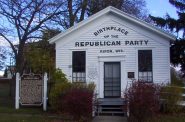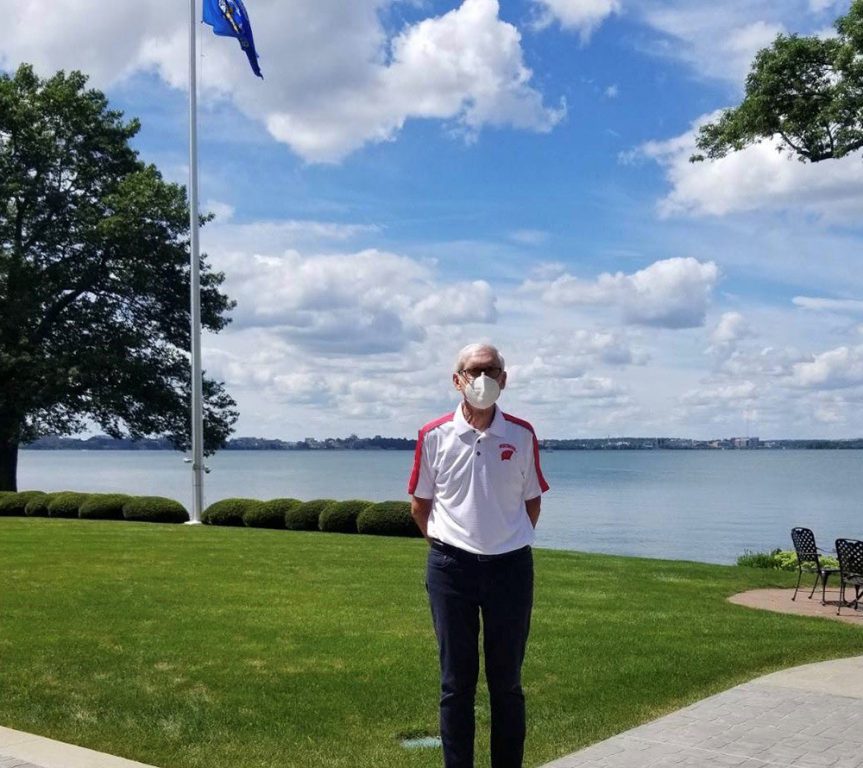How Gov. Evers Responded to Pandemic
It will be an issue in the election: A review of his record shows a very active governor.
Exactly two years ago, Democratic Gov. Tony Evers faced the biggest challenge of his administration – the emerging COVID-19 pandemic that has killed more than 13,000 Wisconsin residents. Because Republicans say how the former science teacher acted is one more reason why he should not be re-elected Nov. 8, a day-by-day review of his historic response is relevant — and fascinating.
March 12: Evers declares statewide “public health emergency,” designates Department of Health Services as the lead agency to respond, suspends any administrative rule that hinders that agency’s response, activates the National Guard and tells the state agriculture agency to watch for “price gouging.’
March 16: Evers orders the state Department of Transportation to issue overweight permits for trucks supplying grocery stores “impacted” by Covid-related delays.
March 16: Evers prohibits “mass gatherings of 50 or more people.” Excluded from the order are groceries, hospitals, airports, child-care centers, elderly living centers, jails and prisons and other government buildings. Restaurants and bars were ordered to operate at 50% of capacity or have only 50 customers, end self-serve salad bars and buffets, and maintain six-foot distances. The order warns that violators could be punished by “imprisonments, fines, or both.”
March 17: Evers closes “all bars and restaurants” as of 5 p.m. and prohibits “mass gatherings of 10 or more people.” The new order contains the same exclusions and the same definition of a “mass gathering,” as “any planned or spontaneous public event or convening that will bring together or likely to bring together 10 or more people in a single room or single confined or enclosed space.”
March 18: Limits of 10 staff members, and no more than 50 children, ordered for all child-care centers.
March 20: Evers modifies the “mass gathering” ban of 10 or more in several ways. It now includes “inside and outside” meetings and specific punishments for violators of up to 30 days in jail and/or fines of up to $250. Bars and restaurants are allowed to provide carryout sales, if customers are not seated.
March 24: Saying the pandemic threatens health-care systems, Evers issues a one-month Safer At Home order. Wisconsin faces a “critical moment” and everyone must “do our part to cease non-essential travel, business and social interactions,” he declares. The order attempts to define businesses and workers as “essential” or “non-essential,” clarifying who may remain open. The Wisconsin Economic Development Corp. is swamped with requests to clarify “essential” and “non-essential” functions.
March 27: Evers orders a 60-day moratorium on evictions and foreclosures because “lost hours or wages, or layoffs” mean residents can’t make the next rent or mortgage payment.
April 3: Evers calls a special legislative session asking that legislators move the April 7 spring election, including presidential primaries, to May 19 and the election be conducted only by absentee ballots mailed to all voters. Republicans who control the Legislature do not act on any of those changes.
April 6: Citing the Legislature’s refusal to act, Evers issues an order suspending in-person voting, extending the terms of all officials whose positions were to be filed on April 7, and calling another special legislative session to set a new date for in-person voting. Republican legislative leaders ignore the second request and a ruling by the state Supreme Court allows in-person voting on April 7.
April 16: Evers extends the Safer At Home order to May 26.
May 13: The state Supreme Court strikes down the governor’s Safer at Home edict. “This case is about the assertion of power by one unelected official, [Department of Health Services Secretary] Andrea Palm, and her order to all people within Wisconsin to remain in their homes, not to travel and to close all businesses that she declares are not ‘essential’ in Emergency Order 28,” Chief Justice Patience Roggensack wrote for the four-justice majority.
The order is “unlawful, invalid, and unenforceable,” Roggensack concluded. And from then on the disagreements on how to handle the pandemic only became more intense and more partisan.
Steven Walters started covering the Capitol in 1988. Contact him at stevenscotwalters@gmail.com
If you think stories like this are important, become a member of Urban Milwaukee and help support real, independent journalism. Plus you get some cool added benefits.
More about the Coronavirus Pandemic
- Governors Tony Evers, JB Pritzker, Tim Walz, and Gretchen Whitmer Issue a Joint Statement Concerning Reports that Donald Trump Gave Russian Dictator Putin American COVID-19 Supplies - Gov. Tony Evers - Oct 11th, 2024
- MHD Release: Milwaukee Health Department Launches COVID-19 Wastewater Testing Dashboard - City of Milwaukee Health Department - Jan 23rd, 2024
- Milwaukee County Announces New Policies Related to COVID-19 Pandemic - David Crowley - May 9th, 2023
- DHS Details End of Emergency COVID-19 Response - Wisconsin Department of Health Services - Apr 26th, 2023
- Milwaukee Health Department Announces Upcoming Changes to COVID-19 Services - City of Milwaukee Health Department - Mar 17th, 2023
- Fitzgerald Applauds Passage of COVID-19 Origin Act - U.S. Rep. Scott Fitzgerald - Mar 10th, 2023
- DHS Expands Free COVID-19 Testing Program - Wisconsin Department of Health Services - Feb 10th, 2023
- MKE County: COVID-19 Hospitalizations Rising - Graham Kilmer - Jan 16th, 2023
- Not Enough Getting Bivalent Booster Shots, State Health Officials Warn - Gaby Vinick - Dec 26th, 2022
- Nearly All Wisconsinites Age 6 Months and Older Now Eligible for Updated COVID-19 Vaccine - Wisconsin Department of Health Services - Dec 15th, 2022
Read more about Coronavirus Pandemic here
The State of Politics
-
RNC Brings Fame to Gen Z Party Leader
 Jul 15th, 2024 by Steven Walters
Jul 15th, 2024 by Steven Walters
-
Wisconsin’s Republican Roots Run Deep
 Jul 8th, 2024 by Steven Walters
Jul 8th, 2024 by Steven Walters
-
Feuding Supreme Court Justices Need a Break
 Jul 1st, 2024 by Steven Walters
Jul 1st, 2024 by Steven Walters




















Dear Governor Evers,
Thank you.
Thank you Governor Evers!